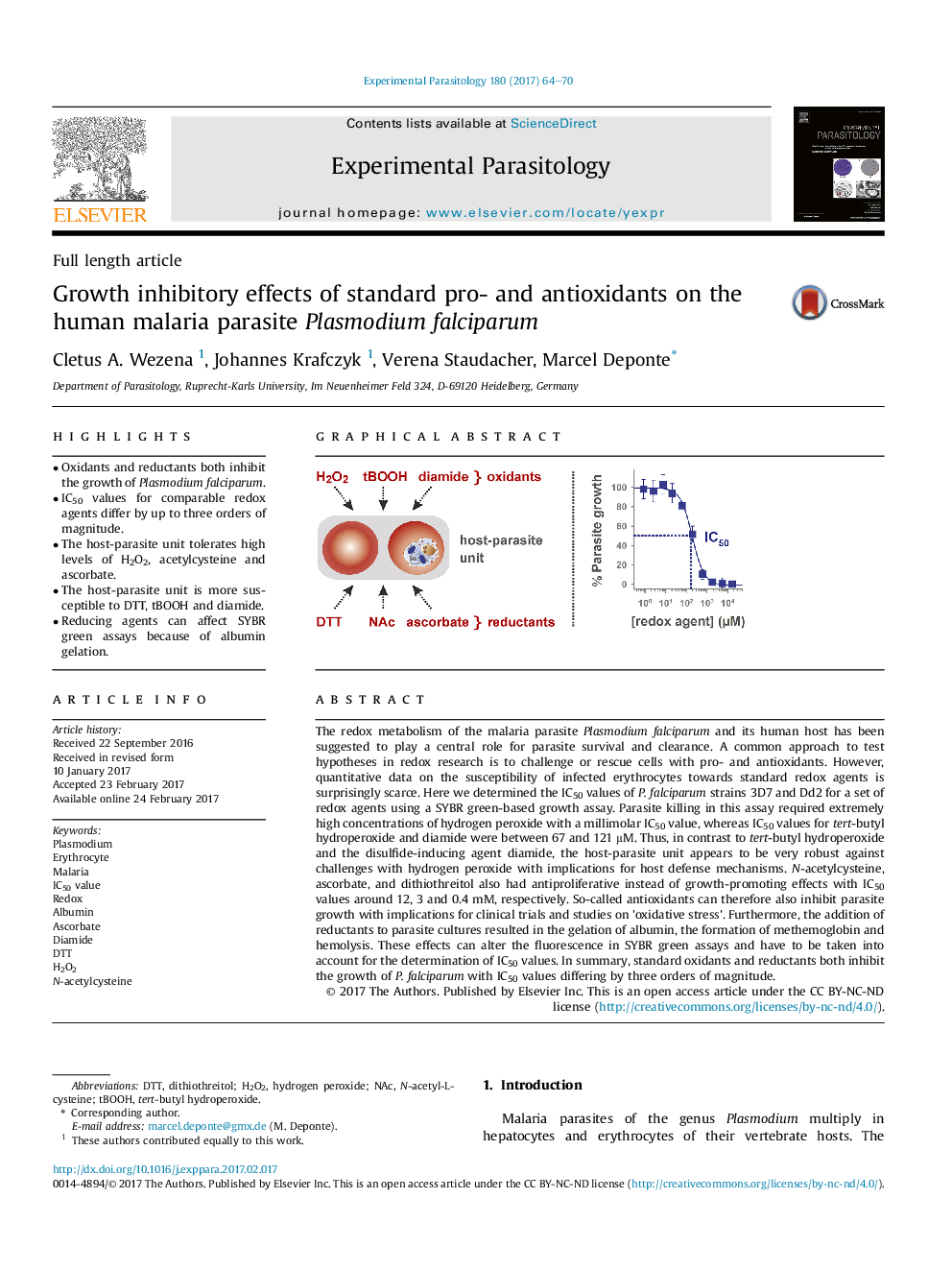| کد مقاله | کد نشریه | سال انتشار | مقاله انگلیسی | نسخه تمام متن |
|---|---|---|---|---|
| 5741050 | 1616985 | 2017 | 7 صفحه PDF | دانلود رایگان |
- Oxidants and reductants both inhibit the growth of Plasmodium falciparum.
- IC50 values for comparable redox agents differ by up to three orders of magnitude.
- The host-parasite unit tolerates high levels of H2O2, acetylcysteine and ascorbate.
- The host-parasite unit is more susceptible to DTT, tBOOH and diamide.
- Reducing agents can affect SYBR green assays because of albumin gelation.
The redox metabolism of the malaria parasite Plasmodium falciparum and its human host has been suggested to play a central role for parasite survival and clearance. A common approach to test hypotheses in redox research is to challenge or rescue cells with pro- and antioxidants. However, quantitative data on the susceptibility of infected erythrocytes towards standard redox agents is surprisingly scarce. Here we determined the IC50 values of P. falciparum strains 3D7 and Dd2 for a set of redox agents using a SYBR green-based growth assay. Parasite killing in this assay required extremely high concentrations of hydrogen peroxide with a millimolar IC50 value, whereas IC50 values for tert-butyl hydroperoxide and diamide were between 67 and 121 μM. Thus, in contrast to tert-butyl hydroperoxide and the disulfide-inducing agent diamide, the host-parasite unit appears to be very robust against challenges with hydrogen peroxide with implications for host defense mechanisms. N-acetylcysteine, ascorbate, and dithiothreitol also had antiproliferative instead of growth-promoting effects with IC50 values around 12, 3 and 0.4 mM, respectively. So-called antioxidants can therefore also inhibit parasite growth with implications for clinical trials and studies on 'oxidative stress'. Furthermore, the addition of reductants to parasite cultures resulted in the gelation of albumin, the formation of methemoglobin and hemolysis. These effects can alter the fluorescence in SYBR green assays and have to be taken into account for the determination of IC50 values. In summary, standard oxidants and reductants both inhibit the growth of P. falciparum with IC50 values differing by three orders of magnitude.
254
Journal: Experimental Parasitology - Volume 180, September 2017, Pages 64-70
